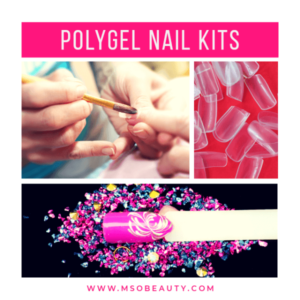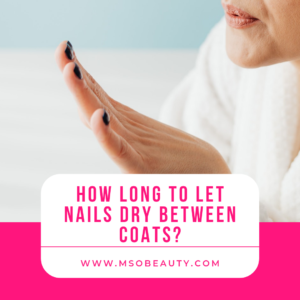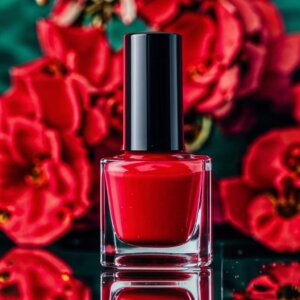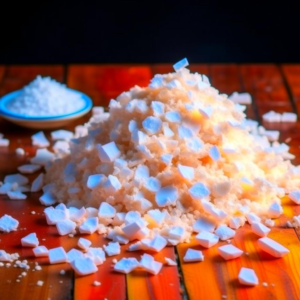Gel nail polish is really popular because it lasts a long time and gives your nails a super shiny finish, but some people are confused about whether gel nail polish is resin. It’s a tricky question that even beauty professionals have trouble answering!
In this article, we’re going to explore the differences between these two materials.
Let’s get started!
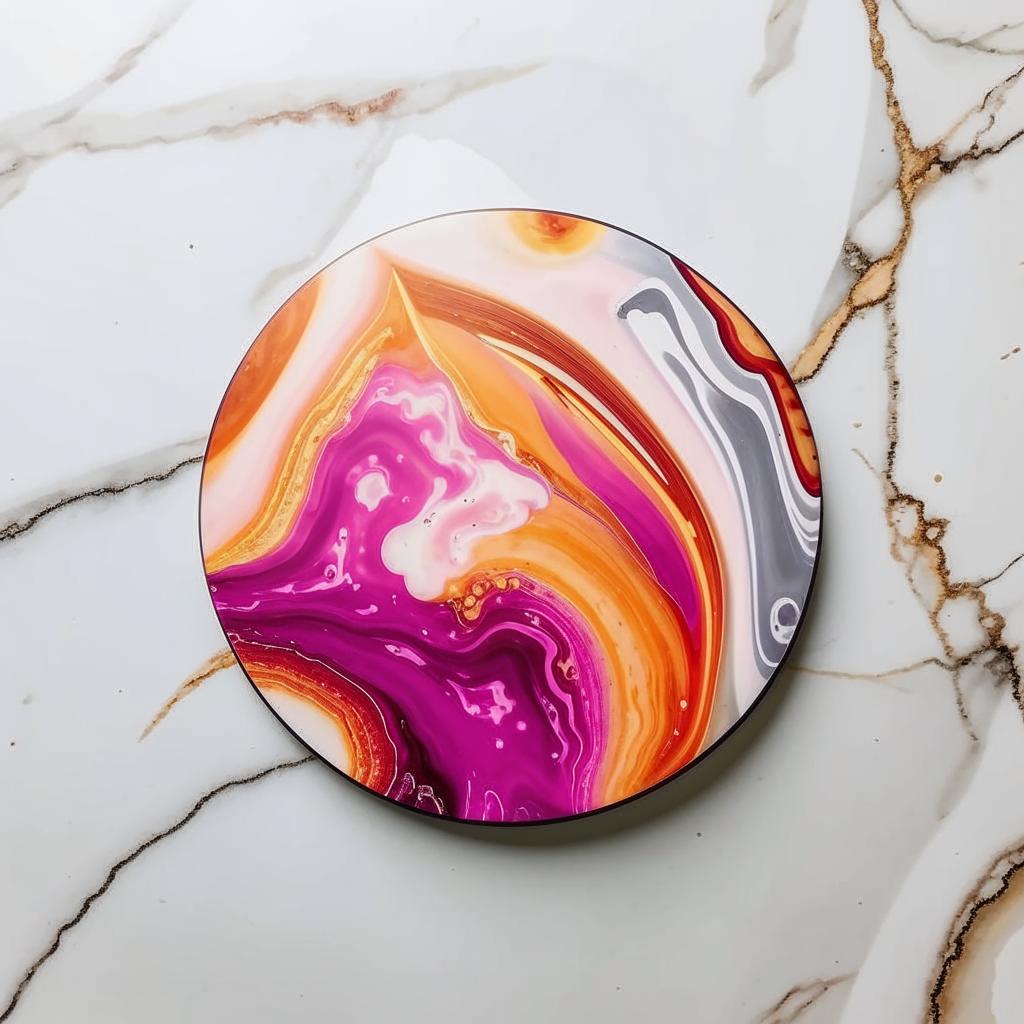
Is gel nail polish resin?
The short answer is not really, they share some similarities, but they’re not the same, and here’s why:
Composition
First off, gel nail polish and resin may seem similar at a glance, but they have a different composition.
Gel nail polish is a concoction of different ingredients, including a bit of resin: methacrylate compounds, photoinitiator compounds, plasticizers, resin, and pigments.
It’s designed to beautify your nails, and each layer gets cured under a UV or LED lamp.
And resin is a synthetic polymer.
It can be used for casting, coating, laminating, crafts, etc.
The UV/LED Connection
There are several different kinds of resin available.
For example, epoxy resin is made from two parts mixed together.
And it hardens on its own wherever it’s poured or brushed.
However, UV resin, just like gel nail polish, needs UV or LED light to harden.
Interchangeability Factor
You can’t swap gel nail polish and resin out and expect the same results.
These two materials may share a few traits, but they have a different purpose.
Gel nail polish overview
Gel nail polish is a special type of nail polish that’s engineered to deliver long-lasting, salon-quality results.
Here’s a breakdown of what makes gel nail polish stand out:
1. Composition:
Gel polish is different from ordinary nail polish.
It’s formulated with a blend of advanced compounds.
These compounds are composed of methacrylates, which give the product its smooth and gel-like texture. They also include photoinitiators that initiate the curing process, plasticizers that provide flexibility, and pigments that add vibrant colors for a truly dazzling effect.
This powerful combo creates a nail polish that’s much more durable than traditional nail lacquers.
2. Curing Process:
Gel nail polish doesn’t air-dry like regular polish.
Instead, it needs a UV or LED lamp to cure and harden.
Each layer you apply needs to dry under the UV/LED light for 30–90 seconds, transforming from a liquid to a solid.
This curing process is what makes gel polish resilient and resistant to chipping.
3. Layer by Layer:
Applying gel nail polish is typically done in several thin layers, with each layer getting cured separately.
This layering technique ensures a smooth, even application and helps create that glossy finish that’s the hallmark of gel nails.
4. Durability and Shine:
Gel nail polish doesn’t just look good it’s built to last.
Once cured, it can stay intact on your nails for more than 2 weeks without chipping or fading.
Plus, it retains its brilliant shine, making your nails look fresh from the salon for an extended period.
5. Versatile Colors:
Gel nail polish comes in a vast array of colors and finishes, from classic reds to holographic glitters.
Whether you’re aiming for a timeless look or something more avant-garde, there’s a shade to suit every style.
It’s also available in special effects and finishes.
For example, you can buy temperature reactive color-changing or magnetic cat-eye polishes.
Resin overview
Resin has been making quite a comeback in recent years, and for good reason.
It’s a versatile material that’s captured the hearts of crafters and DIY enthusiasts.
Here’s a closer look at what resin is all about:
1. Synthetic Polymer:
At its core, resin is a synthetic polymer, which means it’s a man-made material created through a chemical process.
Resins can be formulated from various compounds.
But the ones commonly used in craft projects at home are typically epoxy resins or polyurethane resins.
2. Two-Part System:
Epoxy resin used in crafting usually comes as a two-part system.
You have a resin and a hardener.
When these two components are mixed together in the right proportions, they undergo a chemical reaction that triggers curing and hardening.
This curing process can take a bit of time, depending on the specific resin.
It results in a solid, clear, or translucent material.
3. Applications Galore:
One of the fantastic aspects of resin is its versatility.
Crafters have found countless applications for it.
You can use it for casting, embedding objects, creating jewelry, making decorative items, coating surfaces, and even producing art pieces.
The fact that it can encase objects such as dried flowers with a crystal-clear finish has made it a popular choice for both preserving cherished memories and adding a visually stunning touch to a range of projects.
4. Customization and Creativity:
Resin is like a blank canvas waiting for your artistic touch.
You can add pigments, dyes, glitter, or even embed small objects like flowers, shells, or photos into this material to create unique, personalized pieces.
5. Curing Options:
UV resin needs to be placed under UV or LED light for faster curing.
Epoxy resin doesn’t need this.
It’s designed to cure at room temperature over a longer period.
6. Safety Precautions:
Working with resin does come with some safety considerations.
Proper ventilation is essential because the fumes can be strong.
Protective gear, like gloves and goggles, is often recommended.
Also, be mindful of the working time, as resin can start to cure relatively quickly once mixed.
Can you use resin on your nails in place of gel nail polish?
First off, resin wasn’t born for use on nails.
It’s primarily designed for various crafty endeavors, from creating jewelry to encapsulating objects in shiny, crystal-clear finishes.
And gel nail polish is tailor-made for the job.
It has the right consistency, texture, and ingredients that are nail-friendly.
It adheres well to the nail surface, ensuring a smooth and even application.
Safety concerns
Sure, there have been tales of adventurous souls experimenting with UV resin on their nails.
But let’s be clear. UV resin wasn’t created with your nails in mind, and it can lead to some not-so-pleasant consequences.
One of the big red flags with using resin on your nails is the potential for skin irritation.
Remember, resin isn’t a cosmetic product.
It can irritate your skin and the sensitive area around your nails, causing discomfort and redness.
Nobody wants that.
Stick to What Works
Gel nail polish has been formulated to give you fabulous, long-lasting nails without the risks associated with using other materials.
It’s your go-to choice for achieving beautiful, salon-quality nails without the hassle or potential skin drama that can come with using resin.
Can you use gel nail polish in resin crafts?
Using gel nail polish in resin crafts might not be the most common combination.
However, some crafters have discovered a nifty trick:
You can add gel nail polish to UV resin projects to create captivating effects.
Can gel nail polish be used color resin?
Mixing nail polish directly into resin isn’t your best bet for coloring resin.
It’s like trying to blend oil and water – they just won’t mix properly.
But here’s how you can use gel polish: dripping it onto wet resin.
The polish color spreads and dances on the resin’s surface, adding vibrant splashes of color and intriguing patterns.
Adding pizzazz
Use gel nail polish as your artistic tool.
You can employ it to create marbled effects, swirls, or even intricate designs in your resin crafts.
The polish stays on the surface, allowing you to manipulate and finesse it until you achieve the desired look.
Test it first
Just remember that not all gel polishes are created equal.
Some might behave differently when combined with resin.
So it’s wise to do a small test first to ensure compatibility.
Finishing touches
Once you’ve added your gel nail polish art to your resin project, seal the deal properly.
Applying a clear layer of resin over your masterpiece will protect the nail polish and give your craft a glossy finish.
Is there a specific type of gel nail polish I should use for resin crafts?
There’s no one-size-fits-all answer here.
Some polishes might work better than others with resin.
It’s a good idea to test a small sample to see how they interact before diving into your project.
Can I use any brand of UV resin with gel nail polish?
There is a wide variety of UV resin brands available.
So, again, it’s good practice to experiment and see how your chosen polish reacts with the specific UV resin you’re using.
Doing a test run is a smart move.
How do I ensure the polish stays on the resin surface?
Work on wet resin.
This way, you can manipulate the polish to create your desired effects before it cures.
Do I need to seal my resin craft after adding polishes?
Yes, sealing your resin craft is a must.
Applying a clear layer of resin over your masterpiece not only protects it but also gives it that glossy finish you love.
Can I use gel nail polish with resin for jewelry making?
Absolutely! It can add a stunning touch to resin jewelry.
You can create unique patterns and color combinations to make your pieces stand out.
Are there any special techniques for achieving specific effects?
Try different techniques like marbling, swirling, or layering.
This can help you achieve fun and unique effects.
Experiment with application methods, brushes, or toothpicks to create your desired look.
Can I remove gel nail polish from resin if I want to change the design?
While it’s not as simple as removing nail polish from your nails, you can make adjustments.
Carefully sand or file the unwanted layer on the cured resin to modify or redo your design.
Just be gentle to avoid damaging the underlying material.
Can I use gel nail polish with epoxy resin, or is it better suited for UV-type material?
Polish can work with both epoxy and UV resin, but the curing times and reactions may vary.
Make sure to test your chosen gel polish with the specific type of material you plan to use to ensure compatibility.
Are there any special care instructions for resin crafts with polish?
To keep your piece looking its best, avoid exposing it to extreme temperatures, direct sunlight, or harsh chemicals.
These factors can affect the longevity of the design and the resin’s clarity.
So, it turns out that gel nail polish and resin are not the same thing.
It’s important to keep this in mind when it comes to your nail care routine.
Mixing gel polish with resin creates cool effects and bright colors. Go ahead and let your creativity run wild!






